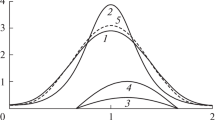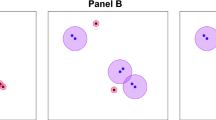Abstract
A stochastic model for the population regulated by logistic growth and spreading in a given region of two-or three-dimensional space has been introduced. For many-species population the interactions among the species have also been icorporated in this model. From the random variables that describe stochastic processes of a Wiener type the space-dependent random population densities have been formed and shown to satisfy the Langevin equations. The Fokker-Planck equation corresponding to these Langevin equations has been approximately solved for the transition probability of the population spreading and it has been found that such approximate expressions of the transition probability depend on the solutions of the deterministic equations of the diffusion model with logistic growth and interactions. Also, the stationary or equilibrium solutions of the Fokker-Planck equation together with the special discussion on the pattern of single-species population spreading have been made.
Similar content being viewed by others
Literature
Auchmuty, J. F. G. and G. Nicolis 1975. “Bifurcation Analysis of Nonlinear Reaction-Diffusion Equation-1”Bull. math. Biol. 37, 1–43.
Brown, K. J. and J. C. Eilbeck. 1982. “Bifurcation, Stability Diagrams, and Varying Diffusion Coefficients in Reaction-Diffusion Equations,”Bull. math. Biol. 44, 87–102.
Da Prato, G. 1983. “On Some Abstract Stochastic Differential Equations,”Bull. math. Biol. 45, 599–603.
—, and M. Iannelli and L. Tubaro. 1979. “Semilinear Stochastic Differential Equations in Hilbert Spaces,”Boll. Un. Mat. ital.,16A, 168–185.
—— and —. 1979. “Some Results on Linear Stochastic Differential Equations in Hilbert Spaces.”Stochastics 6, 105–113.
De, S. S. 1984. “Random Predator-Prey Interactions in a Varying Environment: Extinction or Survival,”Bull. math Biol. 46, 175–184.
Herschkowitz-Kaufman, M., 1975. “Bifurcation Analysis of Nonlinear Reaction-Diffusion Equations-II. Steady State Solutions and Comparison with Numerical Simulations.”Bull. math. Biol. 37, 589–635.
Inagaki, H. 1982. “Selection under Random Mutations in Stochastic Eigen Model,”Bull. math. Biol. 44, 17–28.
Sneddon, I. N. 1957.Elements of Partial Differential Equations, pp. 78–80. New York: McGraw-Hill.
Author information
Authors and Affiliations
Rights and permissions
About this article
Cite this article
De, S.S. Stochastic model of population growth and spread. Bltn Mathcal Biology 49, 1–11 (1987). https://doi.org/10.1007/BF02459957
Received:
Revised:
Issue Date:
DOI: https://doi.org/10.1007/BF02459957




